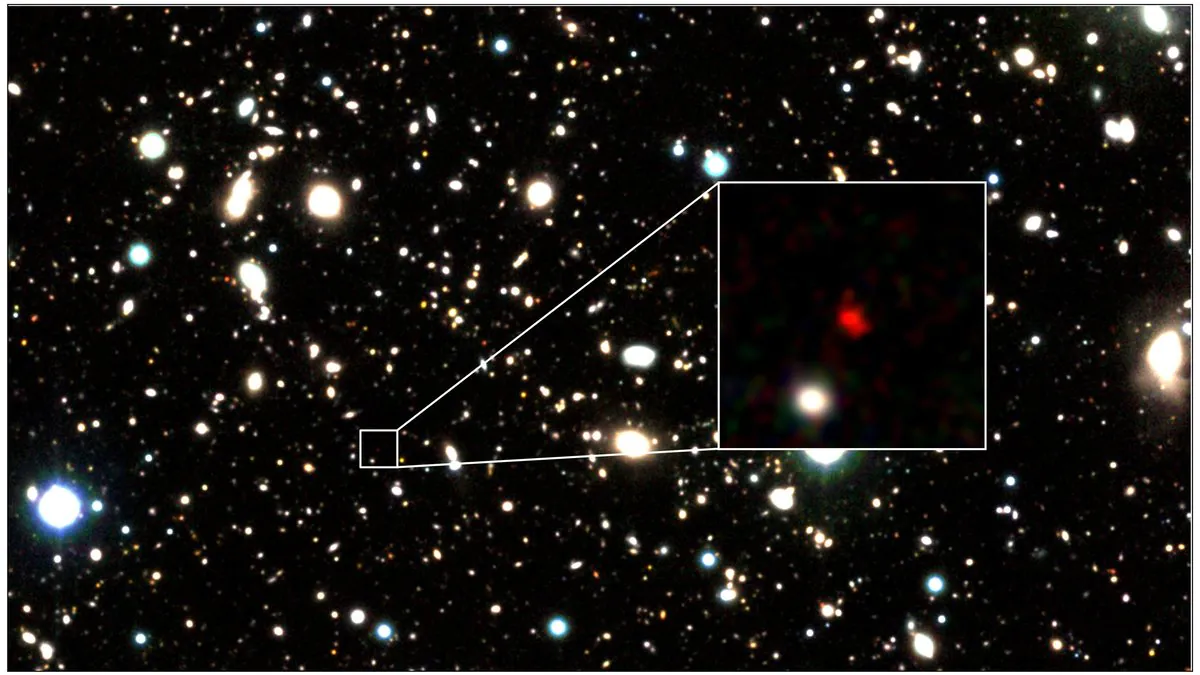
International group of astronomers, including the Center for Astrophysics, Harvard and Smithsonian Institutions discovered the most distant astronomical object: the galaxy. The candidate galaxy, called HD1, is about 13.5 billion light-years away and has been described today in the Astrophysical Journal. In an accompanying article published in the Monthly Reports of the Royal Astronomical Society, scientists began to speculate, what the galaxy is this?
The team offers two ideas: HD1 can form stars at astonishing speeds, and may even be home to the stellar population III – the first stars in the universe that have never been observed before. Alternatively, HD1 may contain a supermassive black hole about 100 million times the mass of our Sun.
“Answering questions about the nature of a source so far away can be challenging,” says Fabio Pacucci, lead author of the MNRAS study, co-author in the discovery paper on ApJ, and an astronomer at the Center for Astrophysics. “It’s like guessing the nationality of a ship from the flag it flies, while being faraway ashore, with the vessel in the middle of a gale and dense fog. One can maybe see some colors and shapes of the flag, but not in their entirety. It’s ultimately a long game of analysis and exclusion of implausible scenarios.”
HD1 is extremely bright in ultraviolet light. To explain this, “some energetic processes are occurring there or, better yet, did occur some billions of years ago,” Pacucci says.
Researchers initially suggested that HD1 is a standard galaxy with starbursts that creates stars at high speeds. But by counting how many stars HD1 produces, they obtained “an incredible rate—HD1 would be forming more than 100 stars every single year. This is at least 10 times higher than what we expect for these galaxies.”
That’s when the team began to suspect that HD1 could not form normal stars.
“The very first population of stars that formed in the universe were more massive, more luminous and hotter than modern stars,” Pacucci says. “If we assume the stars produced in HD1 are these first, or Population III, stars, then its properties could be explained more easily. In fact, Population III stars are capable of producing more UV light than normal stars, which could clarify the extreme ultraviolet luminosity of HD1.”
However, a supermassive black hole can also explain the exceptional brightness of the HD1. Because it absorbs huge amounts of gas, the area around a black hole can emit high-energy photons. If so, it will be the earliest supermassive black hole known to mankind, which is observed much closer in time to the Big Bang than the current record holder.
HD1 was discovered after more than 1,200 hours of observations with the Subaru, VISTA, UK Infrared Telescope and Spitzer Space Telescope. The team then made the following observations using the Atacama Large Millimeter / Submillimeter Grid (ALMA) to confirm a distance 100 million light-years greater than GN-z11, the current record holder for the most distant galaxy.
With the help of the James Webb Space Telescope, the research team will soon be able to observe HD1 again to test its distance from Earth. If the current calculations turn out to be correct, HD1 will become the longest and oldest of the galaxies ever registered.
You can also help Ukraine fight with Russian occupants via Savelife or via an official page of the National Bank of Ukraine.
Read also:
Leave a Reply